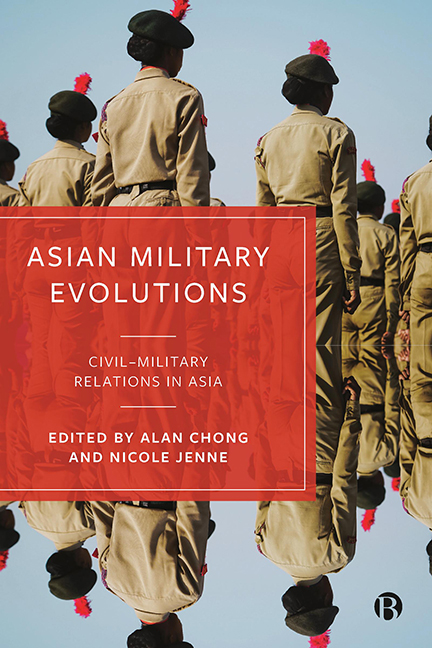Book contents
14 - The Deficient Evolution of Civil–Military Relations in India
Published online by Cambridge University Press: 18 January 2024
Summary
Military strength should be proportional to the threats confronting the polity. It serves no purpose to establish a protection force and then to vitiate it to the point where it can no longer protect. Indeed, an inadequate military institution may be worse than none at all. (Feaver 1999, p 215)
In August 2019, Indian Prime Minister Narendra Modi announced the nation’s most significant defence reform since its establishment as a constitutional republic – the institution of the post of Chief of Defence Staff (CDS) (Unnithan, 2019). By appointing a four-star general and establishing the Department of Military Affairs inside the Ministry of Defence, the government sought to address the array of issues that afflict India’s military effectiveness. The post of the CDS has been a core recommendation of almost all defence review committees set up in India to scrutinize the armed forces’ workings. With its realization, the government has demonstrated intent in implementing more systematic reforms that will have a broader impact on India’s defence organization.1 According to Prime Minister Modi, ‘the CDS would be the government’s single-point military advisor and sharpen coordination between the forces making them even more effective’ (Unnithan, 2019). While the CDS’ investiture is no silver bullet, it assuages the paucity in synergy between the different elements that constitute India’s higher defence management [the political leadership, the bureaucracy and the military] – which have traditionally operated in silos. A similar fragmented relationship also exists among the armed forces’ respective services, severely impacting India’s jointness in operations and defence planning. The CDS is mandated to bind together all these disjointed sections and restructure India’s armed forces. Under his command, India is now undergoing a fundamental recalibration from segregated service-based commands to integrated functional commands. The plans to establish an Air Defence Command and a Maritime Theatre Command (MTC) are already in progress and could herald the most extensive organizational restructuring in the history of the Indian armed forces (Dhoundial, 2021).
- Type
- Chapter
- Information
- Asian Military EvolutionsCivil-Military Relations in Asia, pp. 295 - 319Publisher: Bristol University PressPrint publication year: 2023



